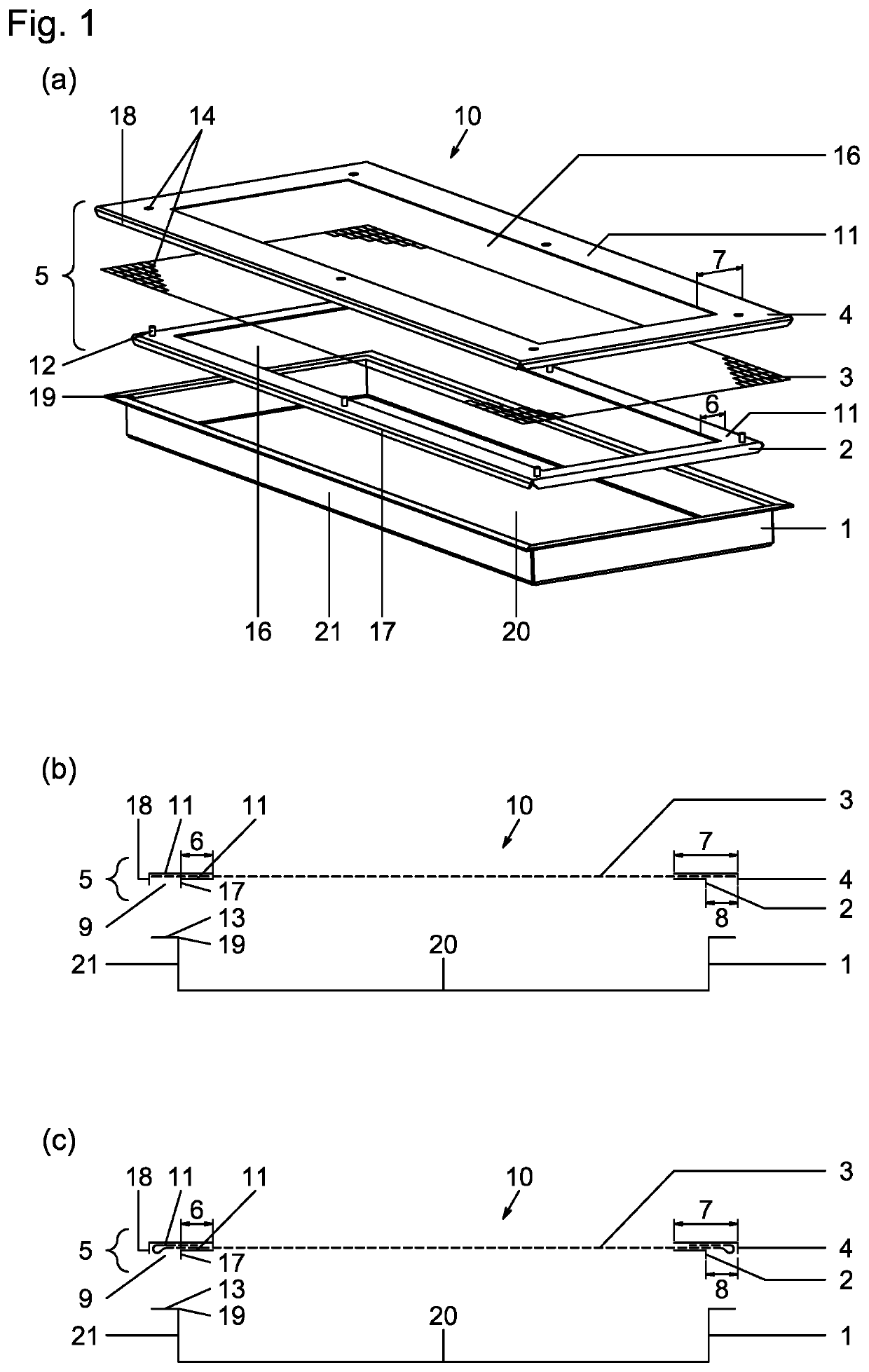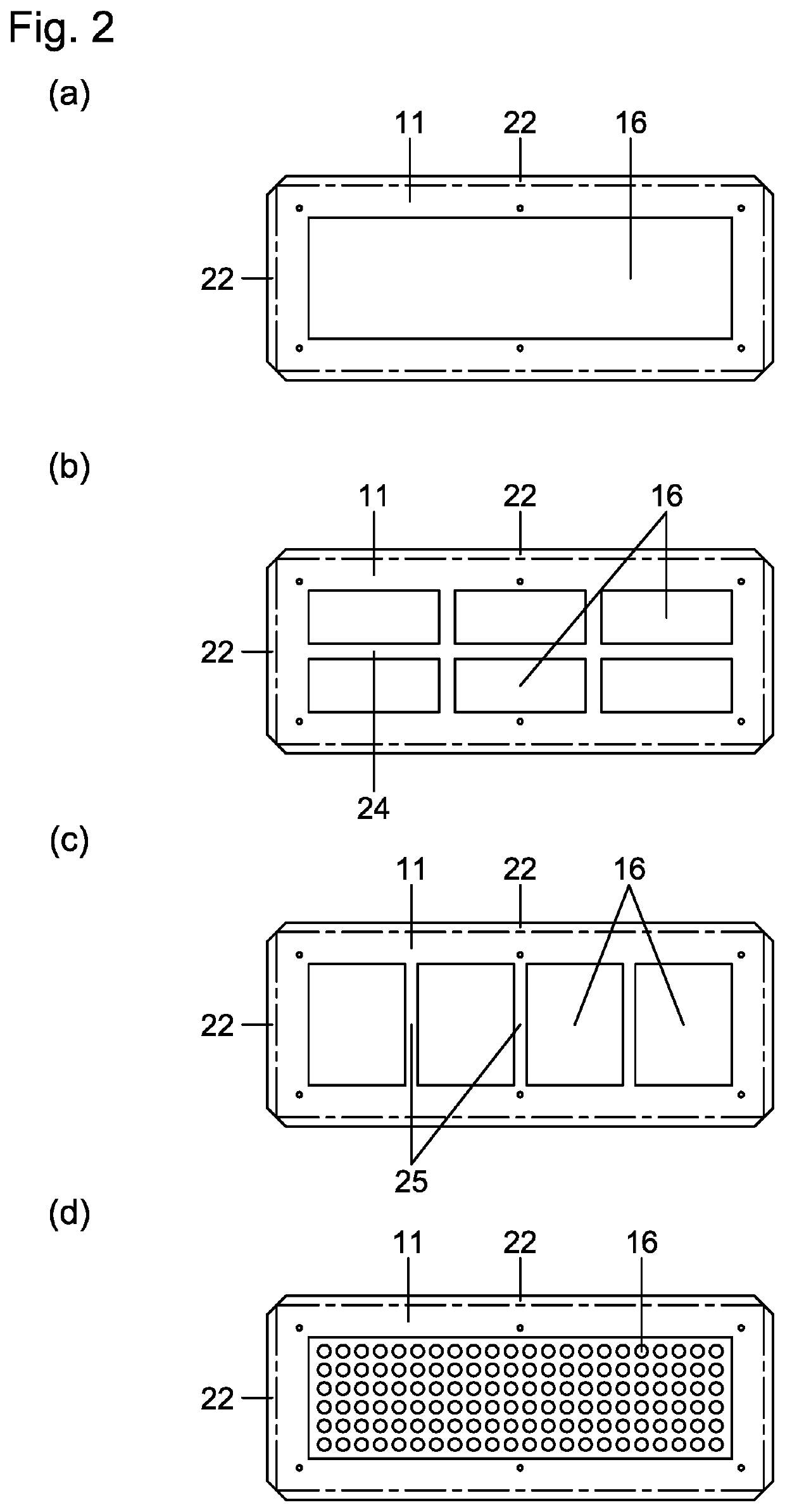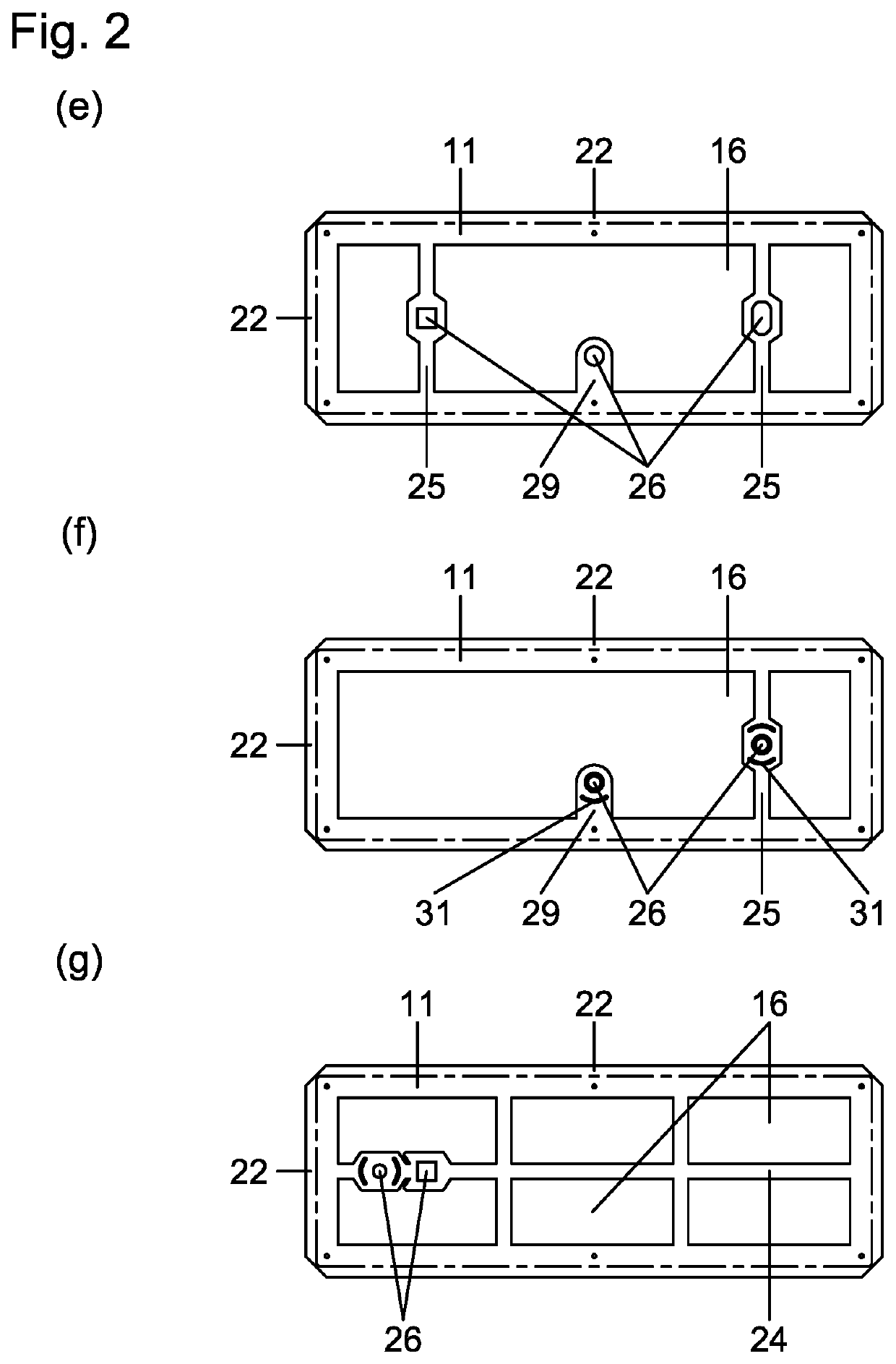Drying container
a container and container technology, applied in the direction of drying solid materials, drying, lighting and heating equipment, etc., can solve the problems of contaminating the material to be dried, the risk of liquid or solid spillage of the material to the surrounding environment, and the difficulty in containing the dried product, which often forms fine powders or dusts,
- Summary
- Abstract
- Description
- Claims
- Application Information
AI Technical Summary
Benefits of technology
Problems solved by technology
Method used
Image
Examples
example 1
[0144]To investigate the need for an elastomeric seal, 20 drying containers as depicted in FIG. 14 were assembled with an additional silicone flat seal inserted between the sheet and frame F2 of the lid. The container body, lower frame F1, upper frame F2 and spring clamps were made from stainless steel, a PTFE (polytetrafluoroethylene) membrane with 1-2 μm pore size served as the sheet. The port incorporated into F1 was closed by a screw cap. The drying containers were placed onto the shelfs of a lyophilization chamber.
[0145]Each drying container was filled with about 5 l of an aqueous paracetamol solution (10 g / l) using a peristaltic pump, whose outlet tube was connected to the drying container's port. After removal of the tube, a temperature sensor was inserted into the port, the lyophilization chamber was closed, and the lyophilization program started.
[0146]After the end of the lyophilization program and venting of the lyophilization chamber, swab tests were taken on the surface ...
example 2
[0149]10 drying containers as depicted in FIG. 14 were assembled and placed onto the shelfs of a lyophilization chamber. The container body, lower frame F1, upper frame F2 and spring clamps were made from stainless steel, a PET (Polyethylenterephthalate) membrane with 7 μm pore size served as the sheet, and was folded back to form a double layer within the lid assembly's circumferential channel (cf. FIG. 1c). The port incorporated into F1 was closed by a screw cap.
[0150]Each drying container was filled with about 5 l of an aqueous paracetamol solution (10 g / l) using a peristaltic pump, whose outlet tube was connected to the drying container's port. After removal of the tube, a temperature sensor was inserted into the port, the lyophilization chamber was closed, and the lyophilization program started.
[0151]After the end of the lyophilization program and venting of the lyophilization chamber, swab tests were taken on the surface of the drying containers and inside the lyophilization c...
PUM
 Login to View More
Login to View More Abstract
Description
Claims
Application Information
 Login to View More
Login to View More - R&D
- Intellectual Property
- Life Sciences
- Materials
- Tech Scout
- Unparalleled Data Quality
- Higher Quality Content
- 60% Fewer Hallucinations
Browse by: Latest US Patents, China's latest patents, Technical Efficacy Thesaurus, Application Domain, Technology Topic, Popular Technical Reports.
© 2025 PatSnap. All rights reserved.Legal|Privacy policy|Modern Slavery Act Transparency Statement|Sitemap|About US| Contact US: help@patsnap.com



